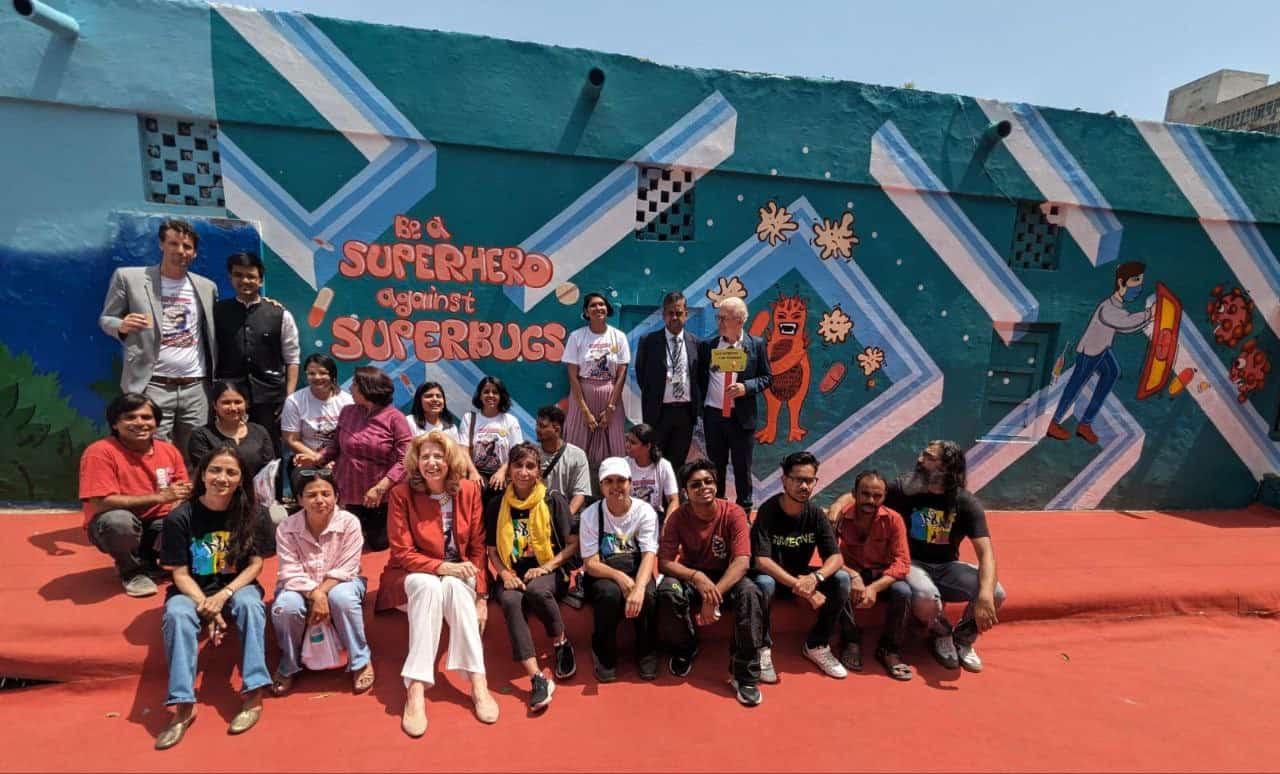“Art has the power to transform, to illuminate, to educate, inspire and motivate.”
– Harvey Fierstein
A significant milestone unfolded in SaS’s journey as a vibrant mural highlighting the issue of Antimicrobial Resistance (AMR) was unveiled on 18 March 2024 in the heart of the National Capital. Created through collaboration between SaS, Delhi Street Art (DSA), the Embassy of the Netherlands in India, and young students from different schools in New Delhi, this striking Pacman-themed mural will serve as a powerful reminder of the importance of collective action in combating critical health issues like AMR.
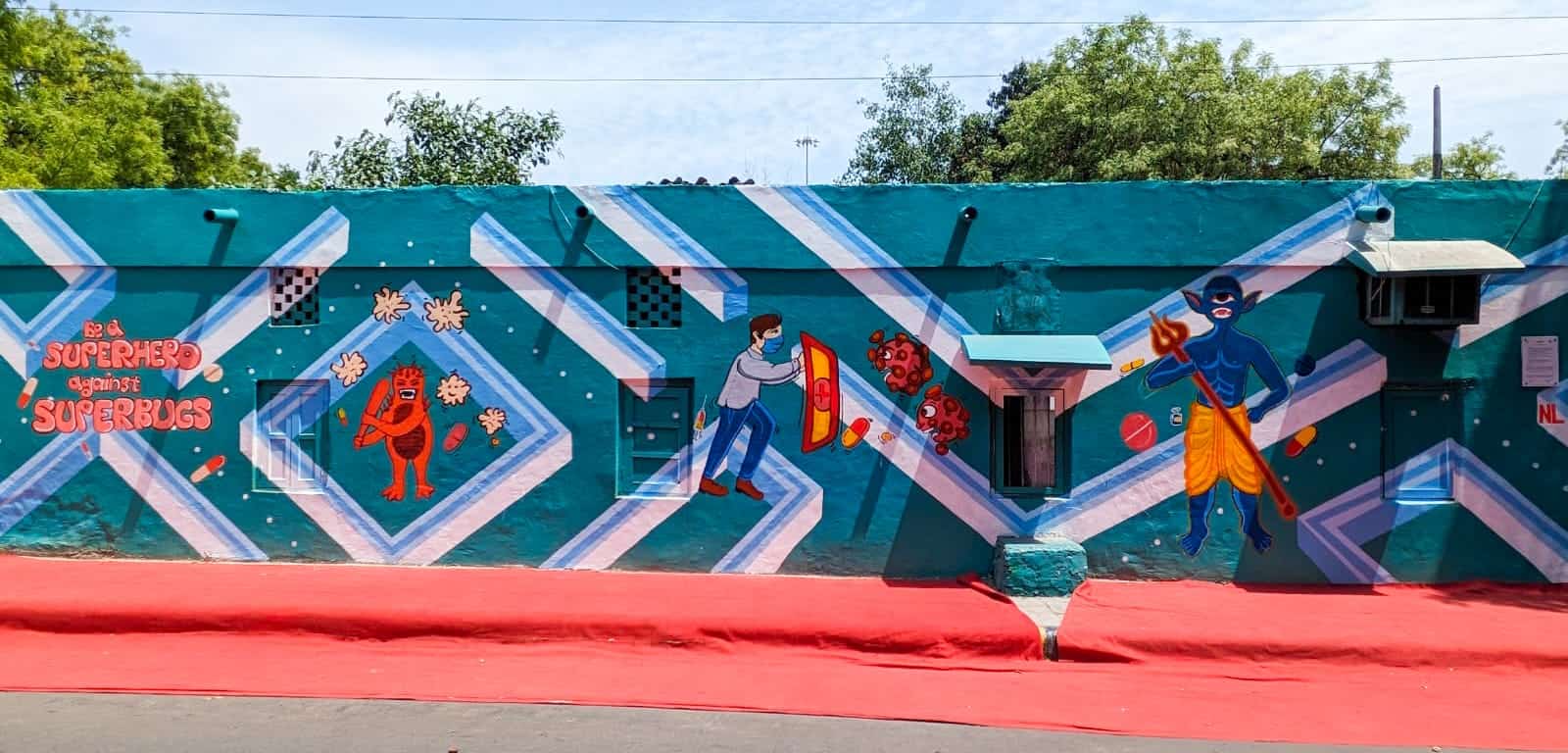
AMR Awareness Mural at Khan Market, New Delhi, India
AMR, identified by the World Health Organization (WHO) as one of the top 10 global health challenges of the 21st century, poses a grave threat to public health worldwide. With antibiotics being overused in hospitals and agriculture and residues of antibiotics found in our environment, water, and food, the crisis has reached alarming proportions. In 2019 alone, AMR was responsible for over 1.2 million deaths globally.
The complex language associated with AMR is one of the major challenges to effectively communicating the intricate and multifaceted nature of this issue to a diverse audience. When it comes to concepts of public health, creating awareness requires striking a balance between the scientific intricacies and the profound impact it has on lives while simultaneously avoiding scare-mongering. This balance is not merely a matter of presenting data and facts. It involves ‘humanising’ the problem, making it relatable, urgent, and deeply personal for everyone, and requires a space for not just information sharing but also dialogue and collaborative problem-solving.
That is why, at SaS, we focus on developing creative and participatory approaches by regularly exploring art tools and formats such as comics, street art, and performing arts to unpack and humanise issues while engaging in dialogue with non-experts.
For us, the AMR mural in the National Capital is more than just a work of art; it’s a catalyst for change. Conceived through a co-design process involving young people, the mural design draws inspiration from classic isometric game designs, depicting a dynamic battleground where AMR superheroes combat the forces of harmful superbugs.
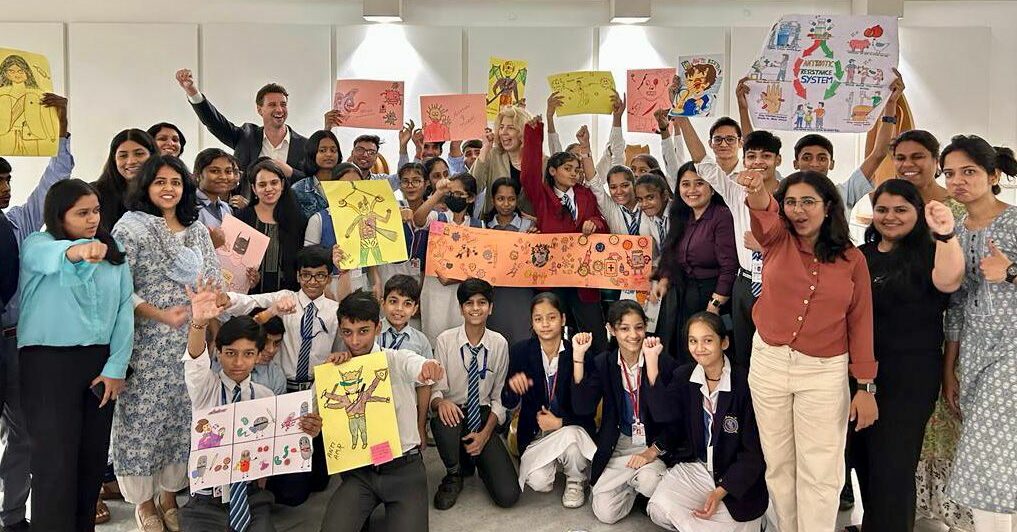
Co-design workshop at the Netherlands Embassy in New Delhi, organized by SaS in collaboration with Delhi Street Art (DSA)
Young Volunteers and School Students painting the mural ahead of the inauguration
The mural was unveiled by Marisa Gerards, Ambassador of the Kingdom of the Netherlands to India. She acknowledged AMR as a silent health crisis on the rise due to the irresponsible use of antibiotics that make their way into our environment, water, and food. She highlighted the Netherlands’ strong national and international policy on AMR and its commitment to collaborating internationally to find new solutions, innovate, and discover new paths to fight the crisis and make the world a better place to live.
Dr. Shipra Misra, CEO of Delhi Research Implementation and Innovation (DRIIV) applauded the young students and volunteers for learning about AMR and engaging in community activities. She emphasised that the science and technology cluster, DRIIV, is dedicated to uniting stakeholders from various sectors to combat AMR. They aim to generate scientific evidence, use advanced technology for AMR prediction, formulate policy actions, and build capacity.
In an inspiring call to action, Krishna Mohan Uppu, Secretary of the New Delhi Municipal Council (NDMC) addressed the young audience and urged them to join hands with SaS’ mission and vision of creating AMR awareness across the city.
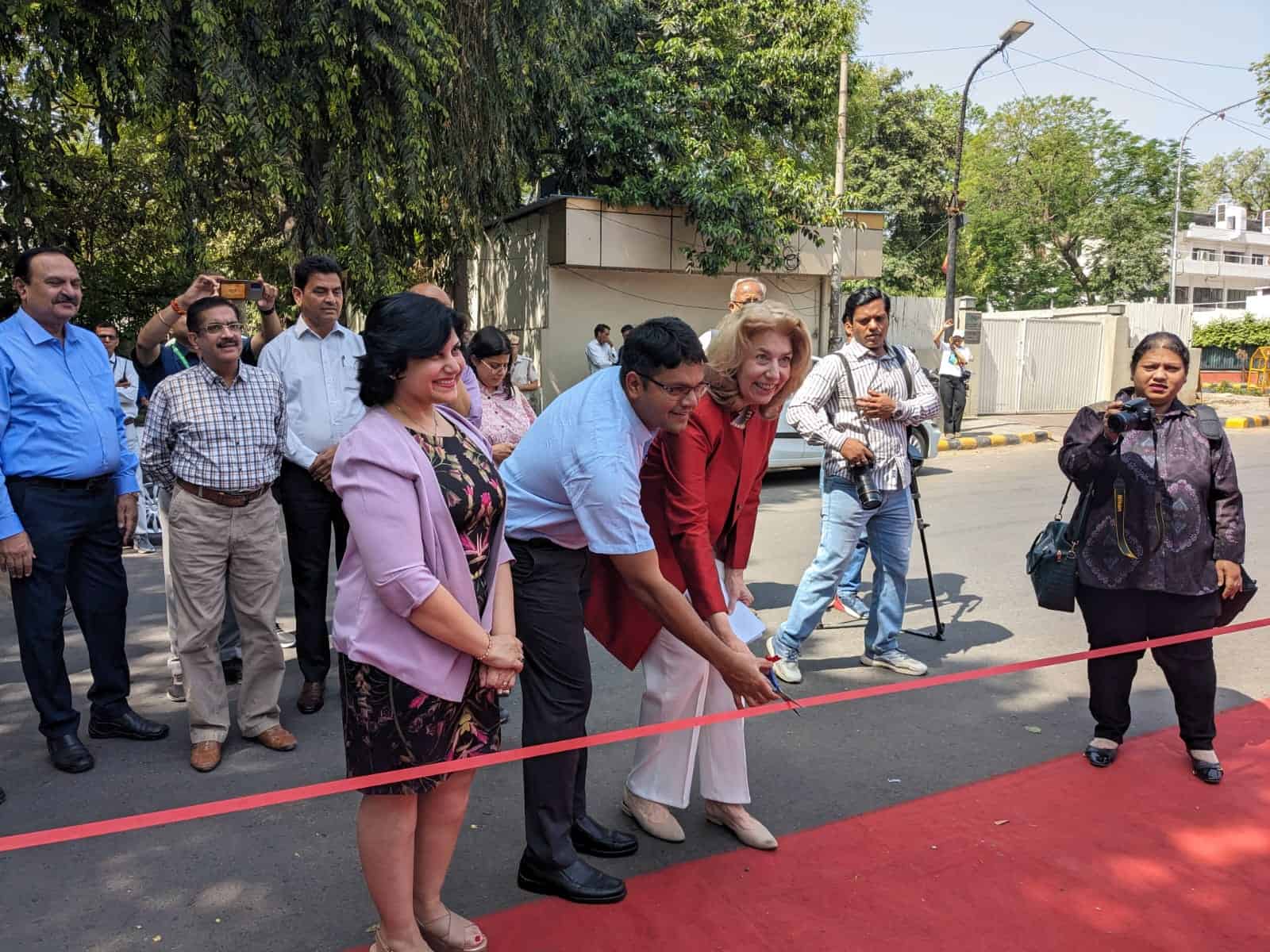
Left to right: Dr Shipra Misra, Krishna Mohan Uppu and Marisa Gerards unveiling the mural
Prof. Rajib Dasgupta from the Centre of Social Medicine and Community Health, Jawaharlal Nehru University (JNU) and a key member of the UKRI-OneHealth Poultry Hub and Community Engagement for AMR (CE4AMR), emphasised the transformative power of involving communities meaningfully in driving action in AMR. He lauded the initiative for bringing together diverse individuals and community for a common cause.

Prof. Rajib Dasgupta addressing our young audience
Standing as a vivid testament to our commitment against AMR, the mural also provided a compelling backdrop for a thought-provoking street theatre performance by the student group ‘YATHARTH‘. Through their captivating performance, ‘YATHARTH‘ aimed to shed light on the crucial connection between human actions and the rise of AMR.
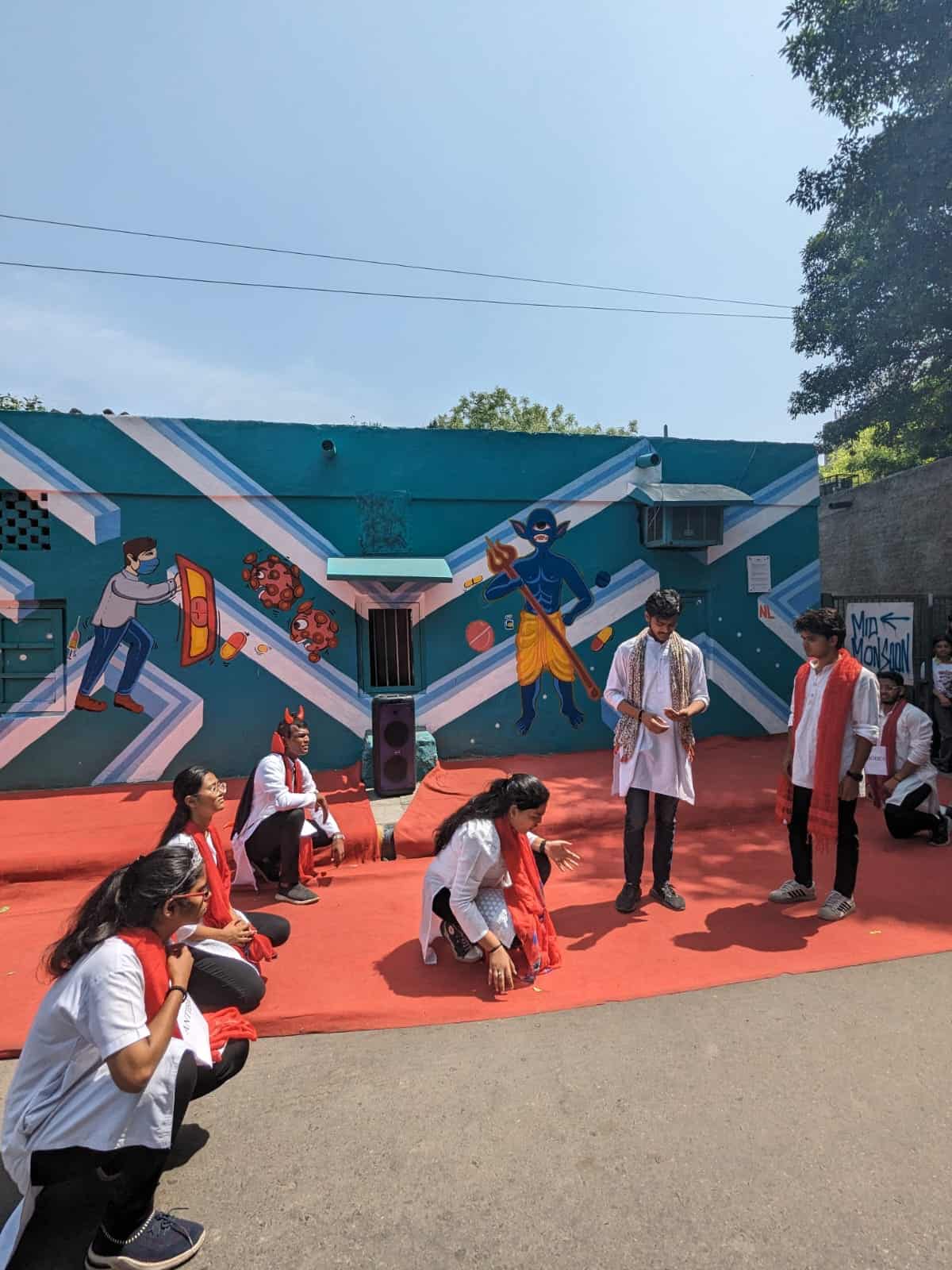
This vibrant public mural in Delhi builds upon the success of one of our previous projects, wherein we collaborated with college students in Hyderabad and artist Dibyush Jena to create a travelling AMR mural. Since its launch in April 2023, this mural has journeyed across the city, touching over 10 different locations, ranging from educational institutions and hospitals to cafes and festivals. Along its path, it has sparked many crucial public conversations about AMR, serving as a springboard for awareness and dialogue.
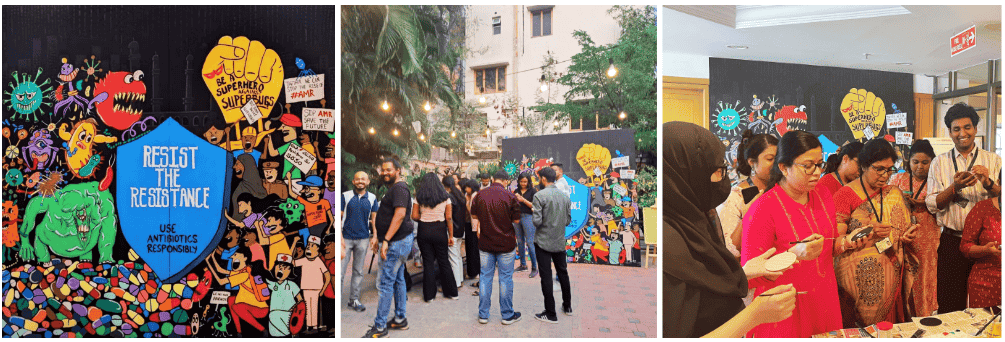
At the core of all our initiatives is the involvement and participation of young people, as we see them as key players and changemakers in the fight against AMR; hence, educating and empowering them with essential knowledge is the need of the hour.
SaS works to foster deeper understanding around AMR and spark meaningful conversations by partnering with a diversity of stakeholders. Our aim is to instill awareness and inspire action at a grassroots level, hoping to create a ripple effect of change that will extend far beyond the confines of the mural.
The mural event brought together a diverse array of perspectives, uniting scientists, health professionals, industry, government, educators, and creative professionals in a common goal: promoting awareness and action about AMR. By bridging the realms of science, society, and policy, partnerships like these hold the promise of driving meaningful change and inspiring innovative solutions to safeguard the health of both current and future generations.
We are hopeful that the mural, in its vibrant hues, will serve as a powerful starting point and reminder that our journey in the fight against AMR is far from being done.
With inputs from Sanjukta Mondal
